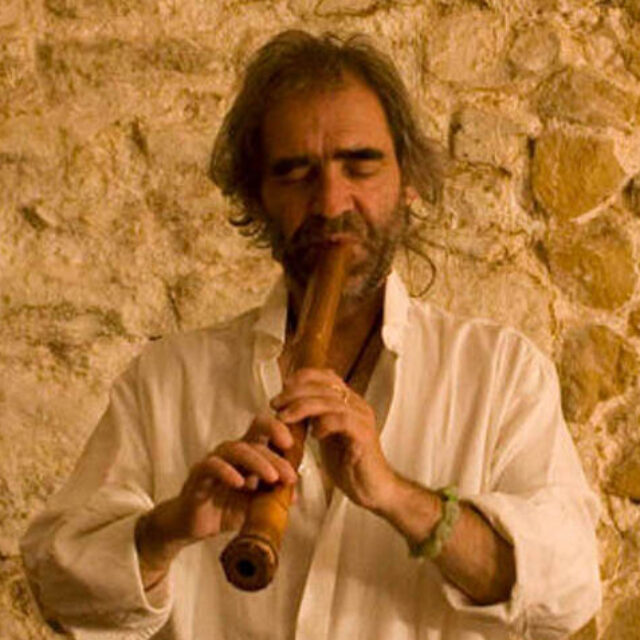Přední český hráč na shakuhachi, skladatel a muzikolog a spoluzakladatel International Shakuhachi Festival Prague
Doc. Vlastislav Matoušek Ph.D. vystudoval na hudební fakultě AMU kompozici a postgraduální kurz hudební teorie. V roce 1996 studoval jako stipendista Japan Foundation hru na shakuhachi u Kifu Mitsuhashiho v Tokiu a japonskou tradiční hudbu u Osamu Yamaguchiho na University of Letters v Osace. Na hudební fakultě AMU obhájil disertaci Kinetika v etnické hudbě (2001) a získal doktorát v oboru hudební teorie – teorie skladby. V roce 2004 byl jmenován docentem. Od roku 1991 přednáší etnomuzikologii na katedře Teorie a dějin hudby hudební fakulty AMU v Praze, od roku 1999 také na Ústavu pro hudební vědu FF UK. Jako teoretik se zabývá hudbou mimoevropských kultur, hudební kinetikou a organologií (Rytmus a čas v etnické hudbě, 2003). Spolupracuje jako hudební publicista s Českým rozhlasem. Je autorem mnohdy značně excentrických skladeb, často s účastí exotických nástrojů a elektroniky. S oblibou uplatňuje netradiční vyjadřovací prostředky a postupy. www.shakuhachi.cz
ISFP 2025 ABSTRACT:
Choshi – Objective Formal Structure
Motto:
“Choshi is a piece that every shakuhachi player must be able to play safely and correctly from memory, even if they have just been awakened from the deepest sleep.”
(Mitsuhashi Kifu 7.8.1996)
Choshi exists in many versions, often differing in minor details. A comparison of the most commonly used notations of this piece has revealed a number of interesting facts.
Taizan Higuchi (1856-1914) after the abolition of the Fuke sect became the 35th Kansu – the main instructor of shakuhachi playing of the renewed Myoanji tradition in Kyoto. I have been studying his notations for many years. Given his position, the importance of his notes and at least 150 years of their existence, I consider them a key source for understanding the authentic form of Fuke Honkyoku of the late 19th century.
At different stages of his life, he wrote down the shakuhachi Honkyoku (Taizan ryu) pieces 3 times, some only 2 times. To my surprise, I found that, unlike most later writings, he always consistently distinguishes HaRo from Ro and TsuRe from Re !
Choshi is written twice in the manuscript. The original writings – phrases (always consistently in one breath) are usually separated by a space. They are written in columns, from right to left, one after the other, usually without division according to the boundaries of blocks (partial formal structures).
After editing according to the divisions of the sub-structures, the result is a notation from which the musical form of the composition Choshi is clearly visible at first glance .
Understanding the actual formal structure makes it much easier to remember and perform a composition.
Choshi
Form: Variation A1 A2 A3 and (code)
„Tonality“: Ro
All 4 parts start with TsuRe! They all end with RoRo!!! Which is not very obvious from the original notation.
Choshi
Tonality: Ro
Formal structure: Variations – A1 (6 breaths=phrases) A2 (5 b) A3 (5 b) a4 (2 b) as a coda.
18 Phrases = 18 Breaths (Phrase as a Sui Dan)
All 4 parts A1 A2 A3 a4 – begin TsuRe! All Parts ends RoRo.
